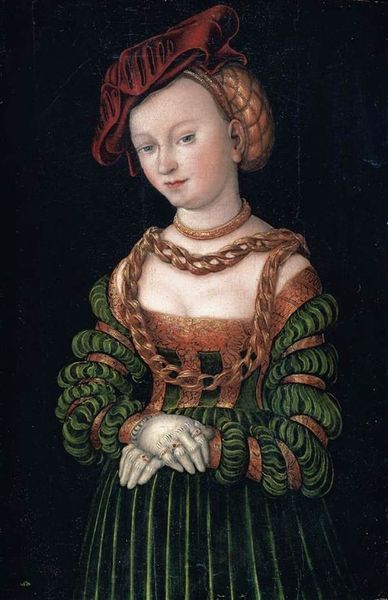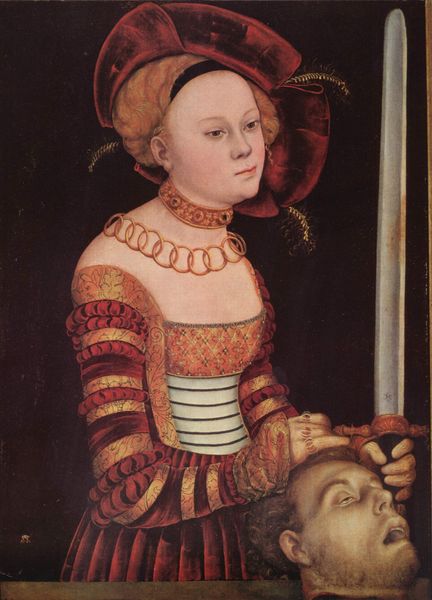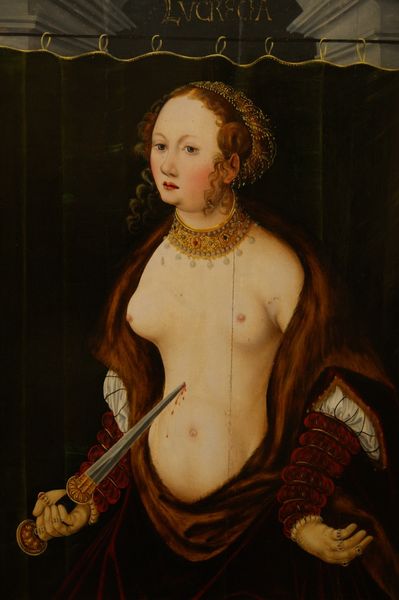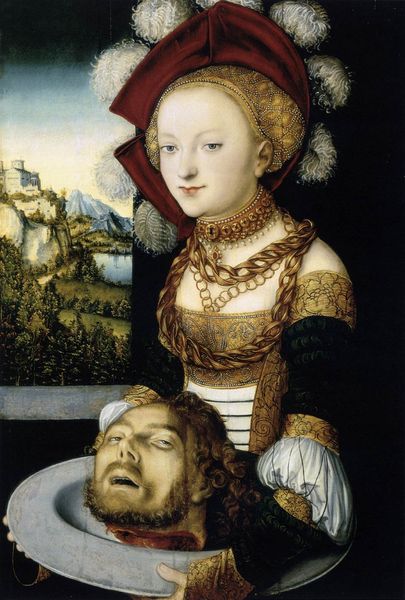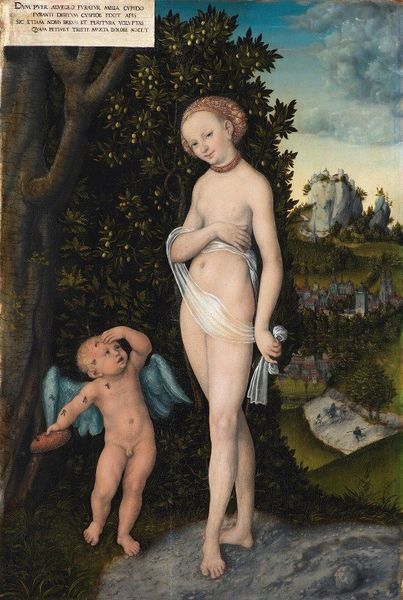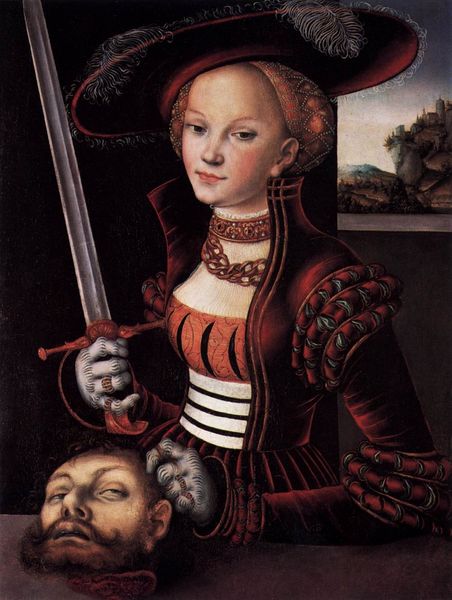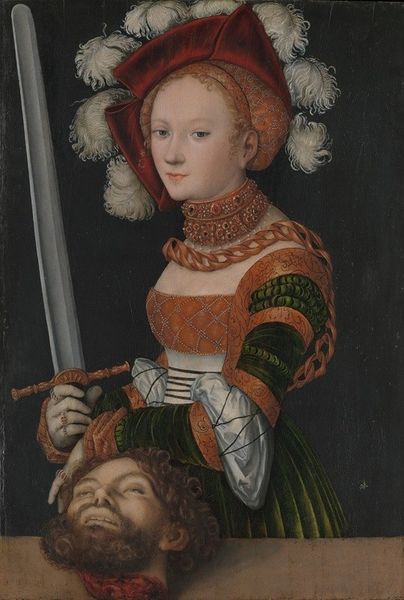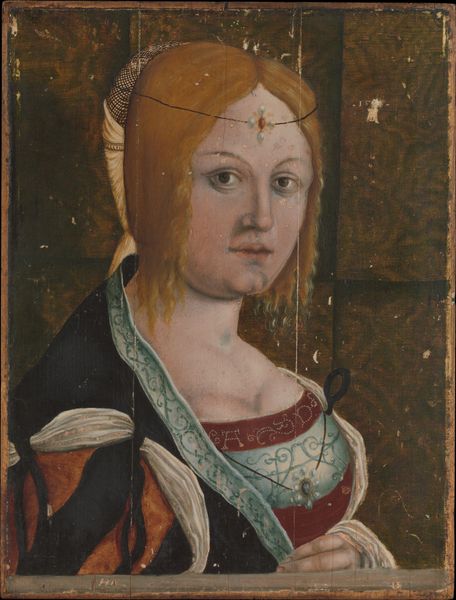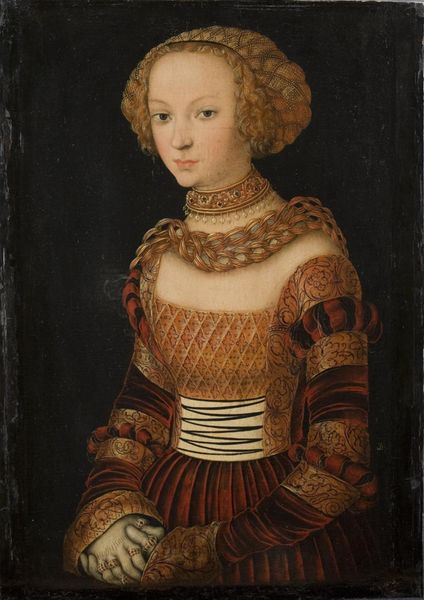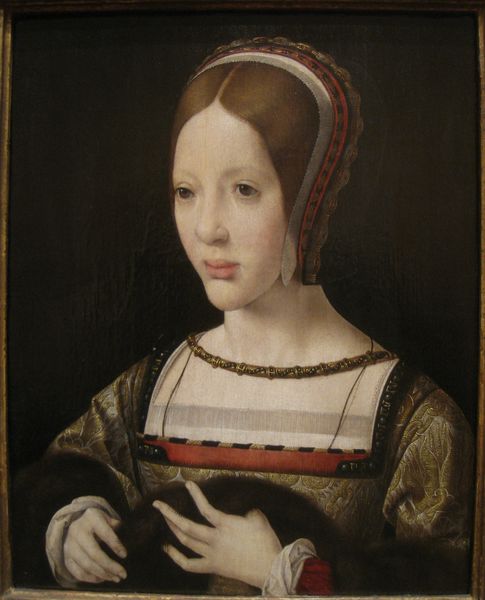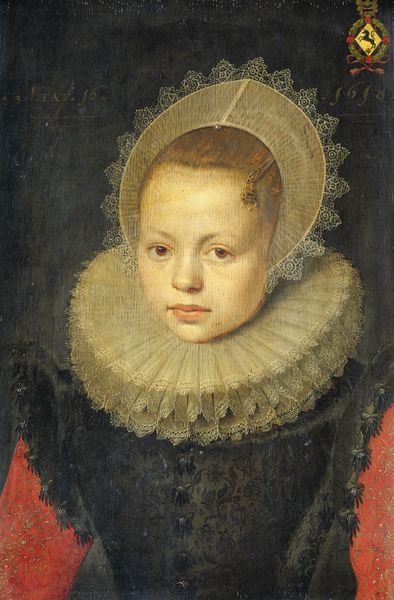
panel, painting, oil-paint
#
portrait
#
panel
#
allegory
#
narrative-art
#
painting
#
oil-paint
#
mannerism
#
figuration
#
mythology
#
history-painting
#
northern-renaissance
#
nude
Copyright: Public Domain: Artvee
Editor: Here we have "The Suicide of Lucretia," a panel painting done in 1529 by Lucas Cranach the Elder. It's striking, isn’t it? There's a weird juxtaposition of the violent act and Lucretia's serene expression. I’m curious, what social or cultural contexts influenced the way Cranach chose to depict such a scene? Curator: Indeed. It is interesting how the composition idealizes a narrative rooted in shame and violation. Looking through the lens of social history, we can see how Lucretia’s story served as a powerful, yet problematic, symbol in 16th-century Europe. How do you see her role, and the message delivered by that representation? Editor: Well, I suppose she embodies wifely virtue, even though her choice seems extreme to us today. The fact that she is partially nude makes me uncomfortable because it hints at the initial violation. Curator: Exactly! The partial nudity, the opulent jewelry—they are not simply aesthetic choices. Consider the political context. Cranach was the court painter for the Elector of Saxony, a key figure in the Protestant Reformation. Lucretia's story, centered on female honor and resistance against tyranny, could have been used to condemn the perceived corruption and abuses of power in the Catholic Church. Does knowing this context affect your understanding of the painting? Editor: It does. Framing the image as a condemnation of tyranny, not just female virtue, opens it up. So, it wasn't just a moral tale, but a political one as well? Curator: Precisely! Furthermore, reflecting on reception, we can ask what message Cranach and his patron hoped to convey through the distribution and display of this piece? Its accessibility or lack thereof? Who might have been invited to view this image, and how were they invited to reflect on the story? Editor: Wow, I never would have considered the Reformation aspect! Thanks, that gives me a whole new way of looking at Cranach. Curator: Absolutely, it’s about questioning how socio-political forces shape art. I have learnt a lot as well by questioning with you!
Comments
No comments
Be the first to comment and join the conversation on the ultimate creative platform.
